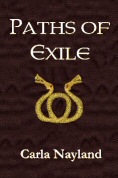



RSS: Blog FeedSubscribe to
Comments [Atom]
April 2007May 2007June 2007July 2007August 2007September 2007October 2007November 2007December 2007January 2008February 2008April 2008May 2008July 2008September 2008October 2008November 2008December 2008January 2009February 2009March 2009April 2009May 2009June 2009July 2009August 2009September 2009December 2009May 2010October 2010March 2011
History Buff is a site
for history lovers everywhere. It is also a site very interested in women
of the past. Although I (sadly) no longer have time to continue these interviews, here is an archive of Q&As about women's lives
in history. And please feel free to stop by History Buff's
sister site for archaeological discoveries making news today. Enjoy!

As an
historical fiction writer I am fascinated by news stories featuring the
past as it's unearthed and reimagined and brought to life. I spend a
large quantity of time searching for news in archaeology and history.
Once in a great while a new archaeological discovery will act as an inspiration
for what I'm currently writing. But most of the time the news stories
I read are simply interesting tidbits of history. Unfortunately, I have
disallowed comments because I travel so frequently that I can neither
monitor nor respond to them. But I would still love to share the history
that I find fascinating each day. So welcome! And feel free to visit my
website at www.michellemoran.com
or contact me at authormichellemoran at hotmail dot com.
Logo designed by Shaun Venish
Blog designed by Mia Pearlman Design
Q&A With Historical Fiction Author Carla Nayland
* In your most recent novel, PATHS OF EXILE, your protagonist, Eadwine, inhabits the world of seventh century
First, it’s in this period that the countries we know as
Second, seventh-century
There aren’t many facts in seventh-century
There seems to be a rather lazy assumption around that because the Middle Ages was a misogynistic era, women must have been treated even worse in the less well documented early medieval period. Even a cursory glance at the primary sources shows how far from the truth that image is. Bede tells us that the queen of East Anglia in the 610s influenced – arguably even dictated – her husband’s religious and foreign policy, and says of Abbess Hild of Whitby in 680, “…. not only ordinary folk but also kings and princes used to ask her advice and take it.” Queen Eanflaed of
* Your protagonist, Eadwine, is a king of Deira, which was once located in northern
Thank you! I’m a keen hillwalker, so I knew most of the upland locations long before I started writing the book. All the places are real, and you could walk the moors above Severa’s farm and follow the route of Eadwine’s journey along the cliffs in the snowstorm. The moors haven’t changed much since they were deforested in the Bronze Age, so the bogs and the boulders that Ashhere thinks are trolls are just as described in the story. In the lowlands, there would have been more forest 1400 years ago than now, low-lying areas that are now drained for arable fields would still have been marsh, and places that are now villages would probably have been single farms, if inhabited at all. So I had to imagine the landscape with more trees, more marshes and fewer people.
I start from Bede’s history, because he was writing only about 100 years after the events so he’s the nearest we have to a contemporary source. I also use surviving British sources, such as the Historia Brittonum, the Welsh Annals and the Welsh Triads, since although they were written down quite late they may contain kernels of older tradition. They give a perspective from another point of view, which is invaluable when trying to imagine such a diverse period. I use modern history books, but some are very speculative so I treat them with caution and I check the references wherever I can. Surviving literature, such as Beowulf, The Husband’s Message, The Wanderer, the Exeter Book Riddles, and Welsh poetic epics such as Y Gododdin and the Canu Heleldd gives a starting point for imagining social values and attitudes. Almost nothing is known of the pre-Christian English religion, but the names of the gods were the same as those of the Norse gods, so I draw freely on Norse myths. Then there is the archaeology, which can tell us about the burial customs people followed, the clothes and jewellery they wore, the structures they built, and the tools, utensils and weapons they used. I put all this together, and then I start using my imagination!
Michelle, thank you very much for the opportunity to answer these questions.
 Thank you Carla! And feel free to visit Carla Nayland online for more information about Paths of Exile.
Thank you Carla! And feel free to visit Carla Nayland online for more information about Paths of Exile.







